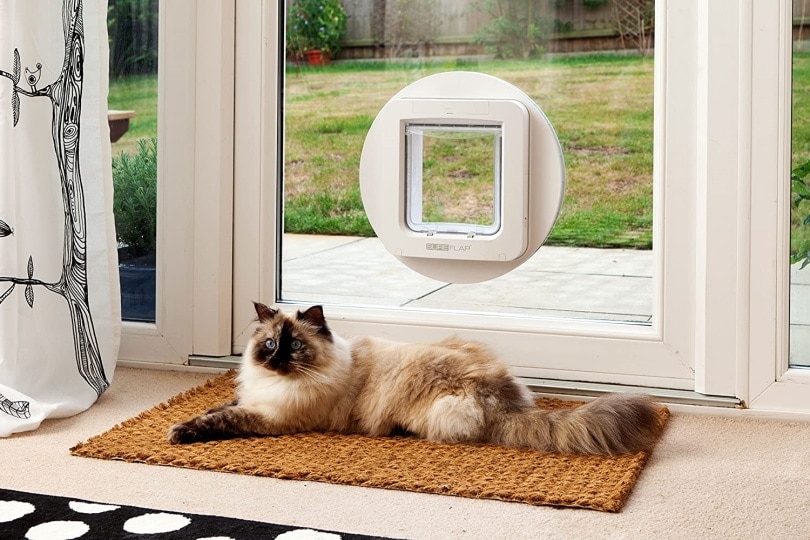Is a Flea Collar Safe for a Cat? Science-Based Facts
Updated on
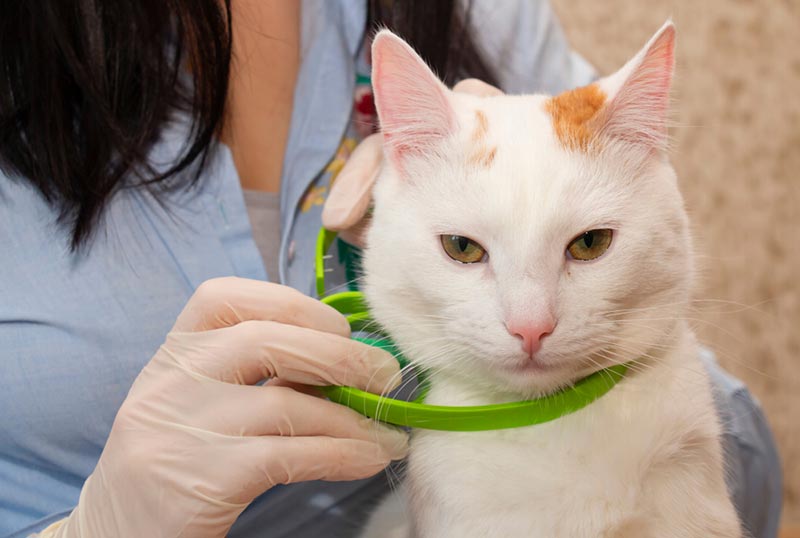
Fleas are common external parasites that can be quite bothersome to deal with, which is why pet owners go to great lengths and expenses to keep these pesky insects away. There are different methods of flea prevention out there, and one of the most well-known options is the flea collar.
There is a great deal of controversy surrounding the safety of flea collars, though, which has resulted in mounting concerns1 over whether they are worth the hype or pose a health risk to pets.
Regarding the overall safety of flea collars, most veterinarians agree that there is no cause for alarm, but it’s always recommended to speak directly with your cat’s vet to determine which type of flea control best suits your pet. In this article, we talk more about flea collars, how they work, and the concerns that have gotten nationwide attention.
Flea and Tick Collars
Flea collars are just one of the many forms of flea prevention that pet owners can use to prevent and/or treat ticks and those dreaded flea infestations. These collars are meant to be worn around the neck for a certain period to repel and kill these irritating pests. Flea and tick collars typically last anywhere from 90 days up to 8 months, depending on the brand and the manufacturer’s recommendation.

How Flea and Tick Collars Work
These collars have two basic functions, which are to repel and kill fleas and ticks. But the overall efficacy of these collars depends on both the manufacturer and the ingredients used in the collar.
Some collars will emit a gas that works to repel fleas and other parasites, while others will spread the active ingredients all over the cat’s body and are absorbed into the skin, similar to the way topical flea medications are used.
Common Ingredients in Flea and Tick Collars
- Amitraz — Amitraz is a non-systemic insecticide that is used throughout veterinary medicine. It is primarily used to treat mange but is also used to treat fleas and ticks by topical application or as an ingredient in flea and tick collars. It has a mild level of toxicity, according to the Pet Poison Helpline.
- Deltamethrin — Deltamethrin is classified as a synthetic pyrethroid, which means that it is a synthetic derivative of the naturally occurring insecticide, pyrethrin, found in chrysanthemum flowers. It works by disrupting the central nervous system through direct contact or consumption. It is considered less toxic to mammals due to body size and higher body temperature.
- Flumethrin — Flumethrin is a pesticide that is typically used in conjunction with other active ingredients. It is a pyrethroid insecticide that is commonly used in veterinary medicine to treat parasitic insects in domesticated pets and livestock. It’s commonly used along with imidacloprid and is popular in top-brand flea collars and should only be used as specifically directed. Low concentrations cause hyperactivity in insects, while high concentrations result in the paralysis and death of insects.
- Imidacloprid — Imidacloprid is an insecticide that was created to mimic nicotine, which is found naturally in many plant species—most popularly, tobacco. Nicotine is toxic to insects, so imidacloprid is used to control insect populations, predominantly fleas, and termites. It is recommended that exposure to imidacloprid is minimized, as it is listed as moderately toxic to humans and other mammals.
- Pyriproxyfen — Pyriproxyfen is a pesticide that mimics a natural hormone found in insects, which disrupts their growth. It is effective against many types of insects and is particularly successful in eliminating flea eggs and larvae. Essentially, it will sterilize various pests and prevent them from maturing and reproducing. Pyripoxyfen is currently considered low in toxicity for humans and other mammals.
- Tetrachlorvinphos — TCVP, or tetrachlorvinphos, is an organophosphate insecticide that is used to control fleas, ticks, flies, lice, and insect larvae on pets, livestock, and their surrounding environments. According to the United States Environmental Protection Agency, there are pet health risks associated with this insecticide if not used according to the labeled instructions. There are active studies currently being conducted on the use of TCVP concerning the risk associated with flea and tick collars. Currently, the EPA recommends serious precautions regarding products containing this insecticide, including not allowing children to play with TCVP pet collar products, keeping TCVP spray and powder products out of reach of children, and washing hands thoroughly with soap and water after handling.
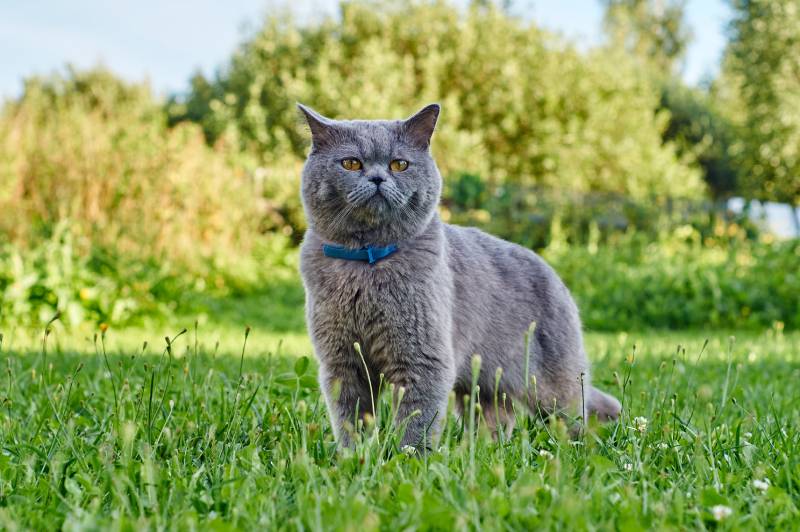
Benefits of Flea Collars
Ease of Use
Flea collars are a simple and easy-to-use flea preventative and treatment. However, it is important that you only use flea collars as directed and only the type of collar designed for the species.
For example, your cat should never be placed in a flea collar meant for small dogs, and vice versa, even if they fit into the weight category. These are designed specifically for each species and for good reason. Make sure you read the instructions carefully and thoroughly, and use the product as directed.
Cost Effectiveness
Flea and tick prevention can be quite expensive, which is why a lot of pet parents turn to flea collars. These collars can last anywhere from 90 days up to 8 months, depending on the type that you purchase. When you weigh the cost of the flea collars versus your typical flea prescription and the length of efficacy, flea collars are typically the most wallet friendly.
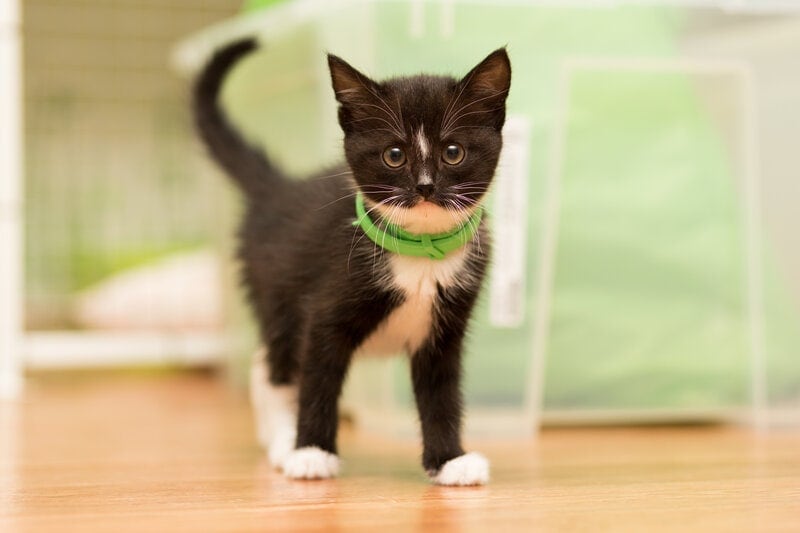
No Prescription Needed
Most highly effective flea-preventative medication must be obtained through a prescription from your veterinarian. While there are over-the-counter flea and tick topical treatments available, they tend to wane in efficacy. Flea collars can easily be purchased over the counter at most pet stores or local department stores.
No Reminders Needed
Unlike your typical monthly flea preventative that either needs to be applied topically or given orally, you don’t have to set any reminders for the following month. If the collar is on your cat, you can rest assured they are being protected.
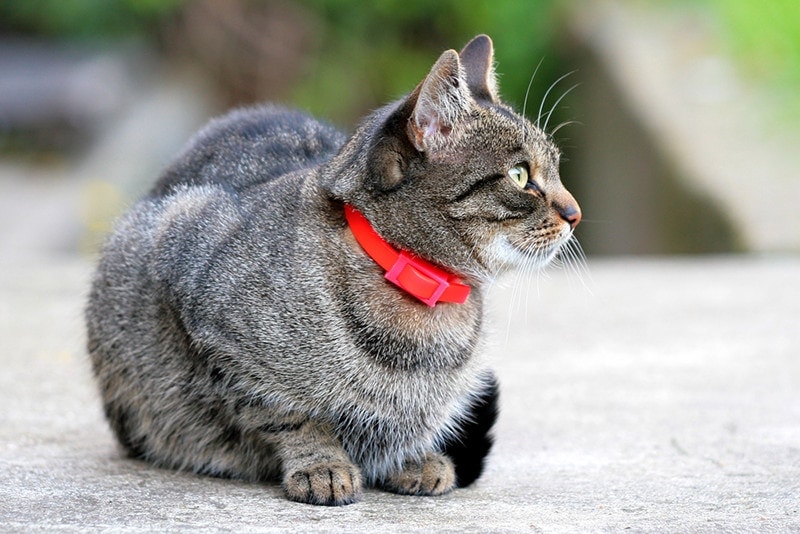
Controversy Surrounding Flea Collars
Many pet owners and environmental groups have announced their concerns surrounding the safety and efficacy of flea collars. This controversy has sparked national attention, and the EPA has received more than 75,000 incident reports involving Seresto brand flea collars since they were first introduced to the market in 2012.
The various reports included approximately 1,700 pet deaths and about 1,000 incidents of harm to humans in the household. The collars have been blamed for a variety of pet health issues, including vomiting, lack of appetite, rashes, seizures, weakness, dizziness, and death.
Petitions and lawsuits have been filed to have these products removed from the market on the grounds that the EPA underestimated the danger of this collar and its approval of certain pesticides. Many of these reports are deemed anecdotal, however, and the data cannot fully support these claims.
Veterinarians and veterinary toxicologists have reiterated that there is no cause for alarm and that they are comfortable with the safety and efficacy of Seresto’s products. The scrutiny of flea collars is ongoing, though, so it’s best to check with your veterinarian to weigh the pros and cons of any flea control product.
Well-designed harnesses, leashes, and collars can make taking your cat for a walk a breeze! Our Hepper Breakaway Collar features UV- and mold-resistant hemp webbing, a safe breakaway buckle, and adjustable slip-locks that perfectly fit even larger breeds. This fashionable collar comes in fun pastel colors and includes a wildlife-protecting jingle bell.
Special Precautions for Cats
Any type of flea collar or medication designed for dogs should never be used on cats. The types of chemicals and the concentrations can vary significantly between cat and dog flea collars. It is very possible to overdose a cat with too much insecticide, which is why these products must be used only as directed by the manufacturer.
Flea collars can be very risky for outdoor cats. These collars can easily become snagged or stuck on various outdoor objects like trees, bushes, or fences and could cause injury or suffocation. Break-away collars are highly recommended for any cats that have regular access to the outdoors.
Some cats may exhibit severe reactions to pyrethrin or any pyrethroid-containing products. Cats are particularly sensitive to pyrethrin and pyrethroids because they are unable to metabolize them quickly and efficiently due to their unique liver metabolism. Signs of pyrethrin poisoning can include excessive salivation, tremors, seizures, vomiting, anorexia, and even death.
Final Thoughts
While there is plenty of controversy surrounding the use of flea collars, this type of flea prevention and treatment has been around for a long time. Flea collars are considered safe for cats if they are used as directed. The various insecticides and pesticides used in parasite prevention certainly come with some risks, which is why we highly recommend discussing any concerns and the different options with your veterinarian.
See Also: Are Hemp Cat Collars Eco-Friendly?
Featured Image Credit: Inga Gedrovicha, Shutterstock


